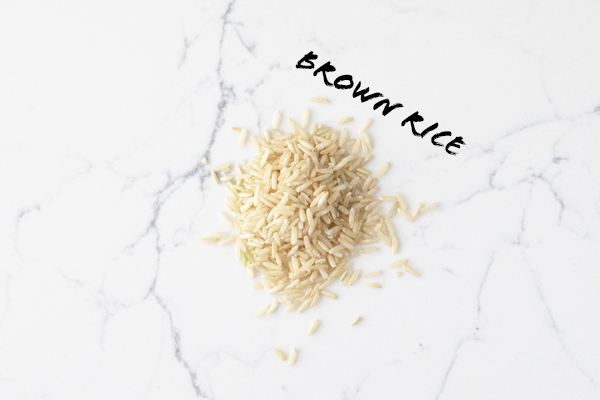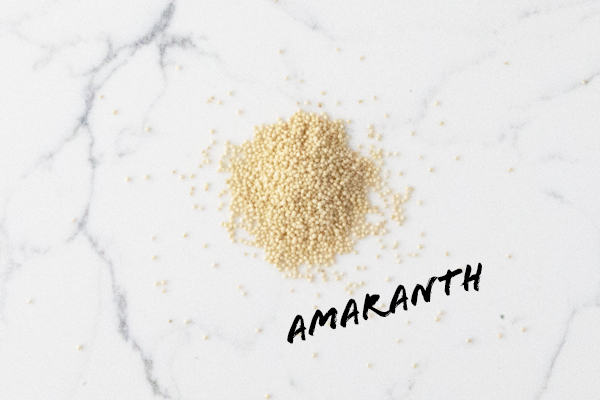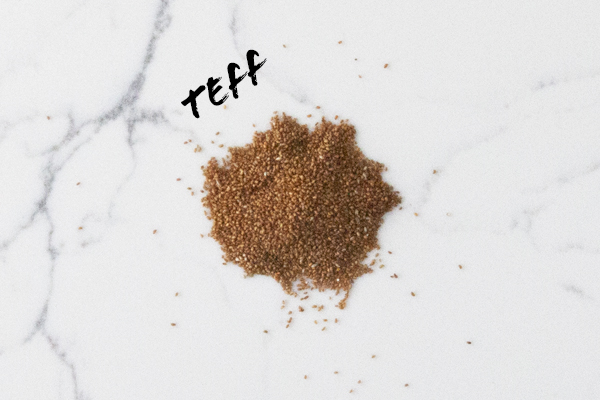Going gluten-free (and saying goodbye to wheat, barley, and rye) doesn’t mean giving up the goodness of whole grains. Say hello to a delicious variety of healthy gluten-free grains that offer all the nutrition and health benefits of whole grains—and a wide range of textures and flavours that make them perfect for making gluten-free whole grain bread, and more!
What’s Inside our Gluten-Free Whole Grain Bread?
At Little Northern Bakehouse, we use the best gluten-free ingredients to make the best baked goods. Our gluten-free whole grain breads are packed with an assortment of healthy whole grains, each with a unique flavour profile, culinary and agricultural history. We went through the Encyclopedia of Whole Grains[1] to share more about the gluten-free whole grains in our breads. And how you can use these gluten-free whole grains in other dishes at home, too.
Brown Rice
Rice comes in many different colours, shapes, and sizes, but brown rice is a whole grain and the healthiest rice option. Rice thrives in warm, humid climates, and in America, rice is generally grown in the southern states. This delicious whole grain has a nutty taste and is often consumed by itself or as a side. Its thick and chewy texture also makes it an excellent substitute for meat in casseroles, bakes, wraps, or cabbage rolls. Brown rice is nutrient-rich and fibre-full, which helps with bowel regularity, lower blood cholesterol levels, and feeling full longer.[2]
Amaranth
Originating from the Aztec culture, amaranth was referred to as ‘king seed’ because of its taste and the nourishment it offered. A whole grain in the pseudocereal group, amaranth boasts the same nutritional profile as whole grains from the cereal family, minus the gluten. This healthy grain is made up of small kernels that look tiny compared to most gluten-free grains. Amaranth is peppery, nutty, and earthy tasting, and works well in both sweet and savory dishes with its mild flavour profile. It can be popped and eaten like popcorn*, roasted and toasted to really bring out nutty flavours, or boiled and softened to make a porridge.
*Just don’t use a hot air popper for popping amaranth. Trust us.
Teff
With roots are in Ethiopia, teff was first used to make injera, a sourdough flatbread used in many traditional Ethiopian dishes. Teff has since gained popularity in India and Australia and is praised for being such a versatile whole grain. Growing in three colours (brown, red, and white), teff is an incredibly small grain (tinier than amaranth!) that has a sweet flavour—some suggest it tastes a bit like molasses. Teff can be eaten raw, making it a perfect salad topping substitute for nuts. As flour, a tablespoon of teff can thicken soups or stews or it can be used to make light and fluffy gluten-free pancakes!
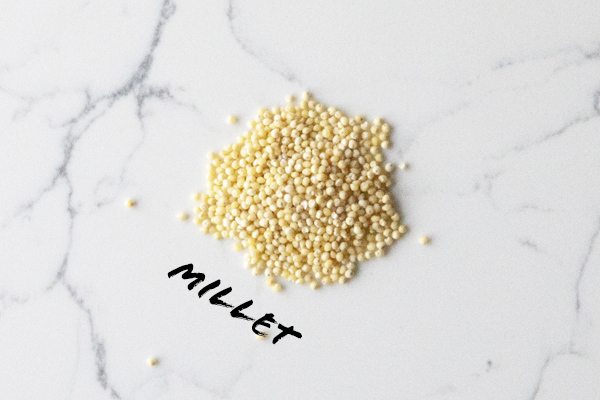
Millet
Millet refers to a group of several grains: pearl millet, foxtail millet, proso millet, finger millet / ragi, and fonio. This ancient seed comes from Southern Asia and is the leading staple grain in India. Today, millet is most commonly used in China, South America, Russia, and the Himalayas, and is picking up in popularity in North America. (It’s not just for bird feed anymore!) Millet is small and butter-coloured.
Because its flavour profile is so mild, millet is a versatile whole grain that works across many dishes. It can be combined with beans to make vegan burger patties, substitute for rice in homemade vegetarian sushi, or stuffed and baked in a bell pepper when mixed with onions, garlic, and plant-based feta.
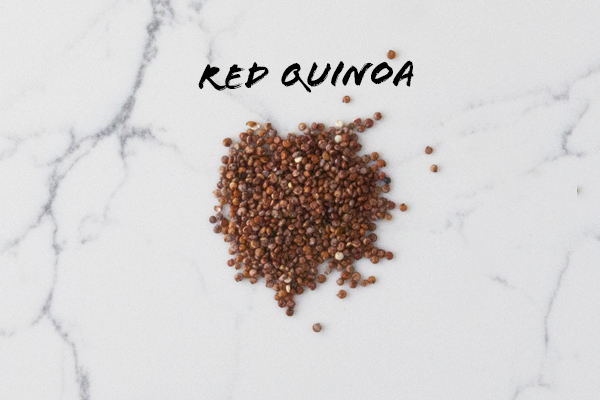
Red and White Quinoa
Originating from Peru, quinoa is a light round grain that comes in many different colours including red, white, purple, and black. Nutritionally, quinoa is the same regardless of its colour, but the colour will slightly impact the taste of the whole grain. White quinoa is the light and fluffy on the palate, whereas red quinoa is chewy. Quinoa has grown in popularity in North American cooking over the last decade as a high-protein gluten-free whole grain. (To help keep up with demand, some varieties are now grown in Canada, too).
Cooked, quinoa can be combined with black beans, tomato paste and spices to make vegetarian falafels, used as a gluten-free substitute for couscous or bulgar wheat in tabouleh, or it can mixed with non-dairy yogurt and fruit in the morning. Quinoa should always be rinsed before cooking to remove bitter residue.
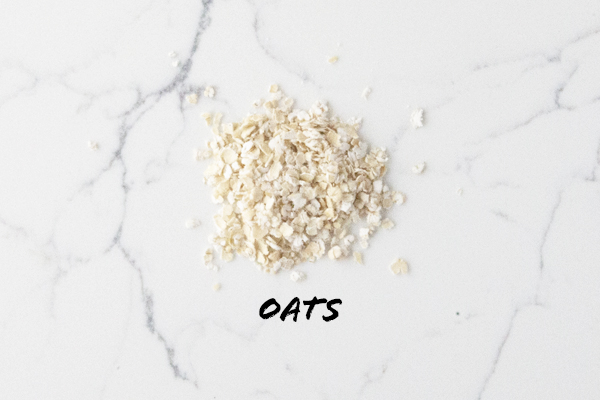
Oats
Unlike other whole grains, oats typically don’t have their bran and germ removed in processing. That means when you eat oats, you’re definitely getting the whole grain. Oats taste sweet and are usually steamed and flattened—the more they’re steamed and flattened, the faster that they will cook. When oats cook, they absorb the water and can take on the flavour profile of other ingredients in the dish. This makes oats perfect for making sweet and creamy oatmeal in the morning. Oats also add great texture to baking dishes like crusts or cookies, or they can be soaked, blended, and strained to make oat milk.
Oats are gluten-free but are often mixed with other grains that contain gluten. At Little Northern Bakehouse, our oats are sorted and tested to ensure they’re gluten-free before they’re used in our products.
Sprouting
At Little Northern Bakehouse, many of the whole grains used in our gluten-free breads are sprouted. Sprouting makes gluten-free whole grains even better—nutritionally and deliciously! The process of sprouting makes the nutrition in gluten-free whole grains easier for your body to use.
Sprouting breaks down antinutrients[3] (phytate / phytic acid[4], trypsin inhibitor, and tannins[5]) that protect nutrients stored inside the grain while the seed/grain is dormant, but also block our ability to access them when we eat them. Sprouting also improves the availability of key nutrients including iron, zinc, B vitamins, and magnesium. GABA is particularly more available in sprouted brown rice.[7]
Sprouting makes the whole grain easier to digest. As the new plant starts to grow, it uses enzymes to break down proteins and starches into amino acids and simpler carbohydrates, changing the amount and type of fibre, too.[8] Best of all, sprouting just makes whole grains taste better! In sensory tests, it was found that sprouted brown rice is sweeter and develops a more enjoyable texture than unsprouted brown rice.[9]
Get gluten-free recipe inspiration delivered straight to your inbox. Scroll to the footer and subscribe to our monthly newsletter!
Footnotes
[1] The Whole Grains Council, Whole Grains A to Z. Available from: https://wholegrainscouncil.org/whole-grains-101/whole-grains-z, accessed September 14, 2020.
[2] Health Canada, Fibre – Canada.ca. Available from: https://www.canada.ca/en/health-canada/services/nutrients/fibre.html, accessed August 31, 2020.
[3] Nkhata, S.G., Ayua, E., Kamau, E.H., Shingiro, J.-B., Fermentation And Germination Improve Nutritional Value Of Cereatls And Legumes Through Activation Of Endogenous Enzymes. Food Science & Nutrition, 2018:6:2446-2458, September 21, 2018. Available from: https://onlinelibrary.wiley.com/doi/pdf/10.1002/fsn3.846, accessed December 4, 2019.
[4] Gupta, R. K., Gangoliya, S. S., & Singh, N. K., Reduction of Phytic Acid and Enhancement of Bioavailable Micronutrients in Food Grains. Journal of food science and technology, vol. 52, no. 2, 24 Apr. 2013, pp. 676–684. Available from: https://www.ncbi.nlm.nih.gov/pmc/articles/PMC4325021/, accessed December 4, 2019.
[5] Lemmens, E., Moroni, A., Pagand, J., Heiraut, P., Ritala, A., Karlen, Y., Le, K.A., Van den Broeck, H., Brouns, F., De Brier, N., Delcour, J., Impact of Cereal Seed Sprouting on Its Nutritional and Technological Properties: A Critical Review. Comprehensive Reviews in Food Science and Food Safety, 12 Dec. 2018. Available from: https://onlinelibrary.wiley.com/doi/full/10.1111/1541-4337.12414, accessed December 4, 2019.
[6] Patil, S.B., Khan, K, Germinated brown rice as a value added rice product: a review. Journal of Food Science Technology (November-December 2011) 48(6):661-667, 2011. Available from: https://www.ncbi.nlm.nih.gov/pmc/articles/PMC3551059/, Accessed December 4, 2019.
[7] Patil, S.B., Khan, K, Germinated brown rice as a value added rice product: a review. Journal of Food Science Technology (November-December 2011) 48(6):661-667, 2011. Available from: https://www.ncbi.nlm.nih.gov/pmc/articles/PMC3551059/, Accessed December 4, 2019.
[8] Benincasa P., Falcinelli B., Lutts S., Stagnari F., Galieni A.. Sprouted Grains: A Comprehensive Review. Nutrients. 2019; 11(2):421. Available from: https://www.mdpi.com/2072-6643/11/2/421/htm, accessed December 4, 2019.
[9] Wu, Fengfeng, et al, Germinated Brown Rice and Its Role in Human Health. Critical Reviews in Food Science and Nutrition, 53:451-463, 2013.
